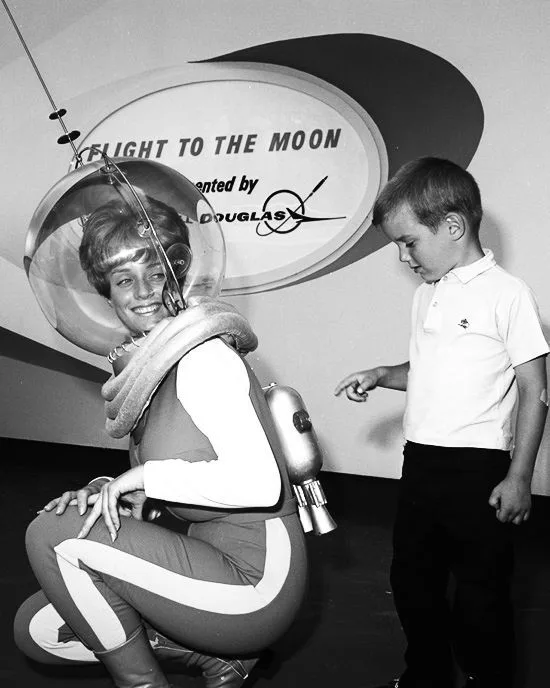Your cart is currently empty!

Beyond the Stars: The Confluence of Function, Fashion and Fantasy in Spacesuit Design
Welcome to our exciting exploration into the captivating intersection of fashion and technology. Today, we’ll be venturing on a short trip through the evolution of spacesuit design, tracing our path from the fantastical uniforms of sci-fi pioneers like Buck Rogers and Flash Gordon to the cutting-edge spacesuits designed by SpaceX. We will be investigating an intriguing question on this voyage: Is the “form follows function” rule absolute in the realm of the cosmos, or has fashion also played a part in shaping the design of spacesuits?
From Fiction to Reality: The Influence of Buck Rogers and Flash Gordon
Long before mankind had made its initial strides into space, the likes of Buck Rogers and Flash Gordon were captivating audiences with their thrilling extraterrestrial exploits. The outfits they donned, though more an expression of aesthetic allure than scientific realism, defined a vision of future space fashion.
Their outfits, awash with intricate designs, vivid colors, and metallic fabrics, encapsulated the sense of marvel, exhilaration, and the unexplored charm of space exploration. These imaginative portrayals influenced the public perception of what astronauts should look like, subtly informing the approach to actual spacesuit design in the years that followed.
The Dawn of the Space Age: Lessons from the Moon Landing
The heat of the space race in the 1960s prompted a shift towards function in spacesuit design. Insights from the historic Apollo moon landing in 1969 played a pivotal role in advancing the development of spacesuits. The suits worn by Neil Armstrong and Buzz Aldrin, known as the A7L suits, were bespoke, multilayered creations engineered specifically for lunar extravehicular activity (EVA).
These lunar spacesuits were not mere apparel; they were complex technological life support systems, comprising layers for thermal regulation, micrometeoroid protection, and pressure maintenance. The helmets were fitted with gold-tinted visors to protect the astronauts from unfiltered sunlight. Their bulky and rigid form was a clear case of function dictating form, with aesthetics taking a back seat.
The Evolution of Spacesuit Design: From Shuttle Era to SpaceX
The advent of the Space Shuttle program saw another shift in spacesuit design. The vibrant orange Advanced Crew Escape Suits (ACES), colloquially known as “pumpkin suits,” were designed for launch and re-entry, but not for spacewalks. Their striking color was intended for better visibility in the event of a water landing.
In the era of the International Space Station (ISS), the Extravehicular Mobility Unit (EMU) became the favored suit for spacewalks. These bulky, white suits were built to withstand the harsh conditions of space, continuing the tradition of form following function.
However, this narrative was rewritten with the entry of private firms like SpaceX into the space domain. The Crew Dragon spacesuit unveiled by SpaceX in 2017 clearly bore the hallmarks of a focus on aesthetics, without compromising on functionality. Designed by Hollywood costume designer Jose Fernandez, in collaboration with Elon Musk, this suit was a chic, futuristic, monochromatic design marking a clear departure from conventional spacesuits.
Despite its stylish exterior, the Crew Dragon spacesuit was brimming with practical features. It was designed to safeguard astronauts during their commute to and from the ISS, equipped with features like flame resistance, pressure regulation, and integrated communication systems. This effectively signaled a new ethos in spacesuit design: “form follows function, but not without a touch of fashion.”
The Future of Spacesuit Fashion
As we usher in the era of commercial space travel, spacesuit designs will undoubtedly continue to evolve. Fashion in space will take on a fresh dimension, with companies striving to strike a balance between rigorous safety standards and the desire for pleasing aesthetics.
From the flamboyant uniforms of fictional space pioneers to contemporary spacesuits, it’s evident that spacesuit design is a dance between function and fashion. The need to survive the unforgiving environment of space has guided the form of these suits, but fashion has always had a role to play, from the colorful ensembles of Buck Rogers and Flash Gordon to the sleek silhouette of SpaceX’s Crew Dragon spacesuit.
In conclusion, while function will always be paramount in spacesuit design, fashion has left and will continue to leave its mark. As we take further steps into the cosmos, the intersection of function, fashion, and fantasy will continue to fashion the attire that accompanies us to the stars. After all, why should style remain an earthbound concept?
